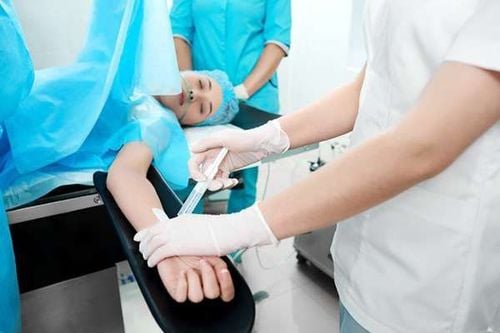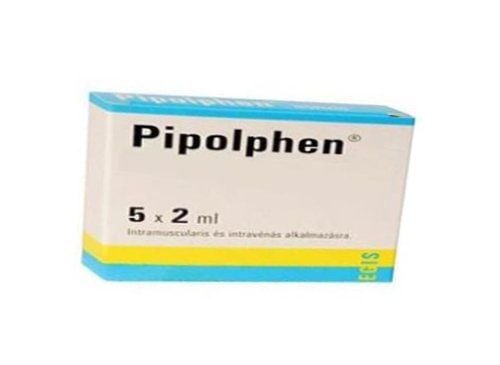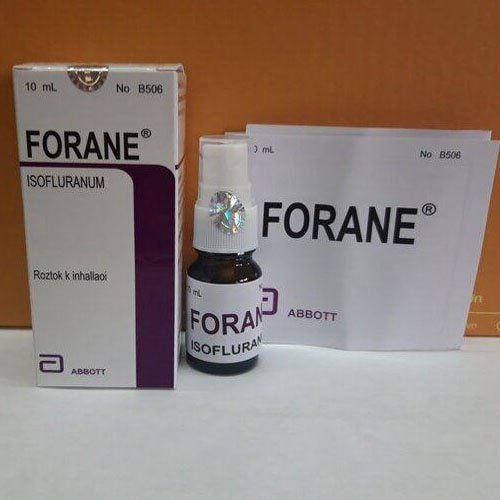This is an automatically translated article.
The article was professionally consulted by Specialist Doctor I Nguyen Duc Thong - Anesthesiologist - General Surgery Department - Vinmec Danang International Hospital.Anesthesia is a method to temporarily lose, reduce, or cancel part or all of the patient's pain sensation with agents and drugs in order to perform surgery. In which, intravenous anesthesia is a common method of general anesthesia, often used for short surgery or treatment with electric shock, neuropsychological analysis.
1. What is General Intravenous Anesthesia?
General intravenous anesthesia is a method of general anesthesia using a combination of anesthetics, sedatives, hypnotics, analgesics and muscle relaxants that are injected into the patient's vein. This method is very popular and convenient in anesthesia - cardiac surgery, neurosurgery because anesthetic drugs have a short duration of action and few side effects. The patient usually breathes on his own with air or is given supplemental oxygen, but the inhaled air must not be mixed with anesthetic vapors.The commonly used method in general intravenous anesthesia is:
Propofol, 0.5-1.5 mg/kg followed by 25-100 mcg/kg/min. Remifentanil 0.5-1 mcg/kg Targeted Controlled Infusion (TCI) may be used, followed by continuous infusion with a 0.5-1 mcg/g/min electric syringe pump. Intravenous anesthesia has 2 forms:
Intravenous anesthesia alone: is intravenous anesthesia using only one type of anesthetic Combined intravenous anesthesia: is in addition to anesthesia, a combination of analgesics or other anesthetics
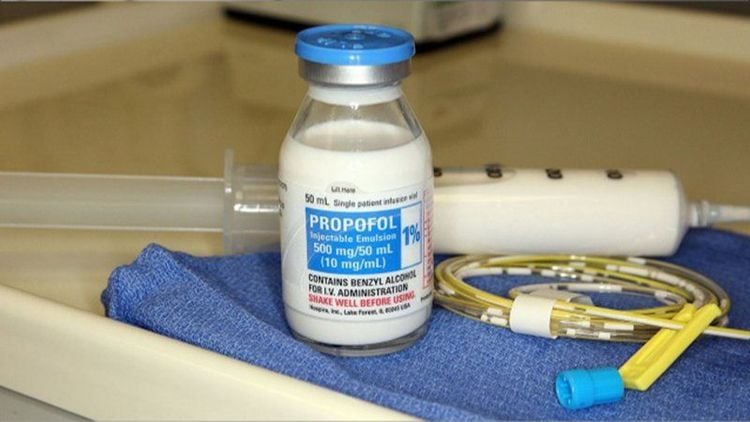
Thuốc mê Propofol dùng trong gây mê tĩnh mạch toàn thân
2. Types of intravenous anesthetics and their uses
Currently, there are a number of drugs commonly used for intravenous anesthesia, including:Thiopental Ketamine Propofol Benzodiazepines Etomidate Gamma hydroxybutyrate Intravenous anesthetics have the following uses:
Act as a sedative to help patients reduce anxiety and fear Fear Drugs used to induce anesthesia, make the patient fall asleep quickly and tolerate anesthetic vapors Anesthesia only for short surgeries, treatment with electric shock or neuropsychological analysis In addition, intravenous anesthetics are contraindicated in the following cases:
Patient is allergic to anesthetics Medical facilities do not have the means to provide respiratory and circulatory resuscitation Uncertain intravenous lines Inexperienced anesthetic users

Không dùng thuốc mê tĩnh mạch với bệnh nhân có tiền sử dị ứng thuốc mê
3. Commonly used methods of intravenous anesthesia
Intravenous anesthesia has the following main modalities:Simple mode with Thiopental NLA modality: helps to keep the patient in a state of indifference, indifferent to the external environment but still conscious, so it can cooperate and relieve pain well The ANS method: is a central analgesia with advantages of hemodynamic stability and good anesthesia. However, the disadvantage is that the patient needs respiratory support for many hours after surgery. AAP method: Anesthesia increases the analgesic potential by adding analgesia and neuroleptics suitable for medium-sized surgeries. Ketamine alone: has good superficial sleep and analgesia effects, the disadvantage is hemodynamic instability, increased secretion, muscle stimulation and hallucinations Propofol alone method: when used, must be used in high concentrations Very high dose to maintain adequate anesthesia leads to prolonged recovery time causing side effects. TIVA modality: is a combination of the above regimens with drugs with stable pharmacokinetics, short acting, such as propofol , fentanyl, alfentanyl or Remifentanyl are the mainstays. This method is most commonly used in clinical practice.
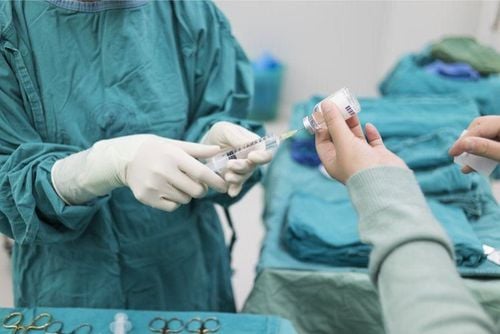
Phương thức tổng hợp TIVA được sử dụng phổ biến nhất
4. How is anesthesia assessed in intravenous anaesthesia?
To determine the level of anesthesia in intravenous anesthesia should be based on the patient's response to surgical stimulation, including 3 levels as follows:Level 1: superficial anesthesia insufficient for surgery Level 2: level of anesthesia surgery Level 3: anesthetic toxicity Manifestations of superficial anesthesia:
Mydriasis, increased blood pressure on stimulus, increased heart rate, peripheral vasoconstriction Reaction to intubation of Canul or endotracheal tube Breathing rapid or stopped breathing with increased muscle tone (different from drug overdose) Manifestations of surgical anesthesia:
Hemodynamic, cardiovascular, respiratory stability No response to surgical stimulation, sufficient muscle relaxation , the pupil is small and fixed in the center Manifestations of deep anesthesia, drug poisoning:
Low blood pressure, irregular heartbeat before cardiac arrest Severe respiratory failure, apnea Skin, mucous membranes are blue and purple In addition , at the Vinmec system, during anesthesia, the patient is fitted with monitoring devices for vital functions (heart rate, temperature, blood pressure, blood oxygen saturation), and anesthesia monitoring (Entropy). muscle softness (TOF .) ) and a team of professional anesthesiologists closely monitor and handle in time.
Doctor Duc Thong has 14 years of experience in the field of Anesthesia. Especially, with 12 years working at the Department of Anesthesiology and Resuscitation at C Da Nang Hospital, Dr. Thong has extensive experience in the field of Anesthesia and resuscitation for elderly patients with many comorbidities and serious illnesses. surgery; helping many heavy and complicated surgeries to be successful. Currently, an anesthesiologist at the Department of General Surgery - Vinmec Da Nang International General Hospital
For detailed advice, please visit Vinmec health system or book online HERE.






